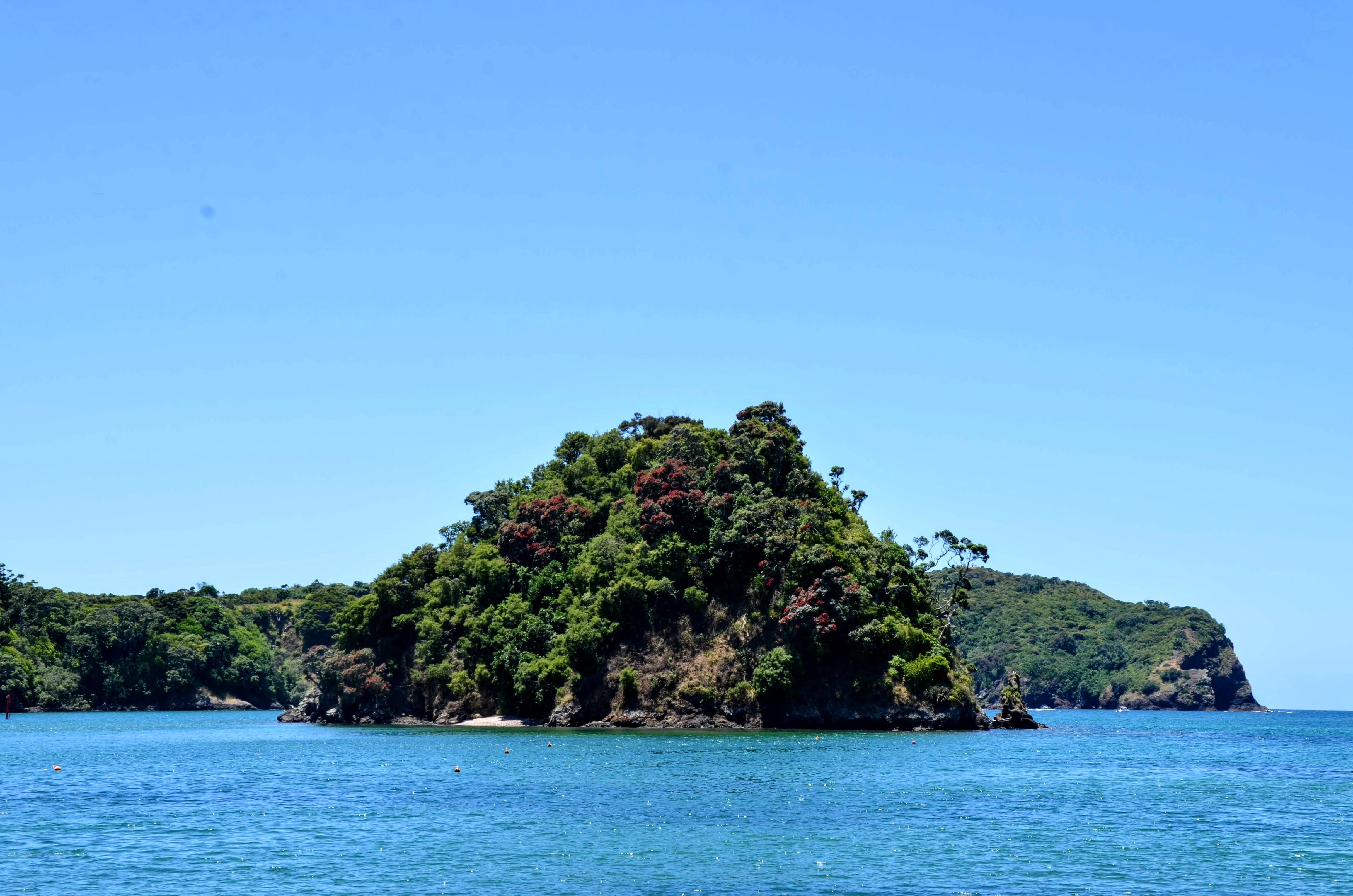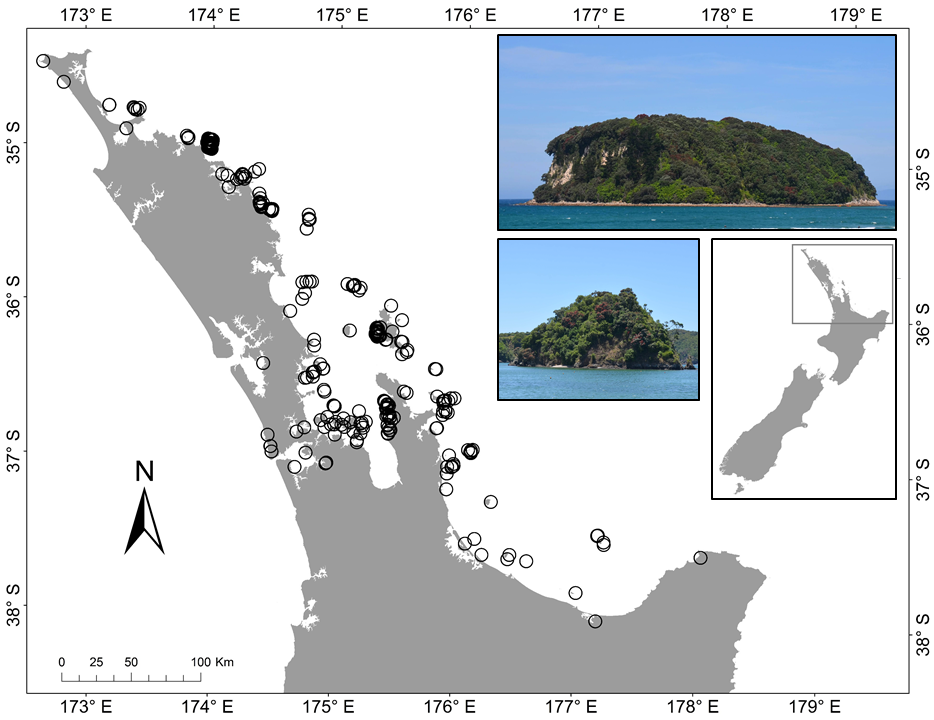Plant Invasions on northern Aotearoa New Zealand offshore islands
Investigating the distribution of native and non-native plant species on islands and the interplay between plant traits, life histories, and island characteristics. The goal is to inform conservation bodies by providing effective management strategies.

 Although islands make up only a small fraction of Earth's land surface, they contain a disproportionately large share of global biodiversity.
Unfortunately, they also experience high levels of invasion by non-native species.
In this project, we aim to explore the distribution of native and non-native plant species on 264 islands
offshore northern Aotearoa New Zealand to help conservation bodies make informed management decisions.
Although islands make up only a small fraction of Earth's land surface, they contain a disproportionately large share of global biodiversity.
Unfortunately, they also experience high levels of invasion by non-native species.
In this project, we aim to explore the distribution of native and non-native plant species on 264 islands
offshore northern Aotearoa New Zealand to help conservation bodies make informed management decisions.
Key Findings
(1) There are subtle, yet distinctive, differences in the distribution of native and non-native species on
Aotearoa New Zealand offshore islands. Invasive plant species prefer larger, less isolated, less exposed islands located closer to urban areas.
(2) These differences are often determined by plant traits. For instance, grasses tend to be distributed more
similarly to native species compared to woody species.
(3) However, the key factor shaping plant invasions on Aotearoa New Zealand islands is naturalization time.
The earlier a species naturalized, the greater the number of islands it occupies.

